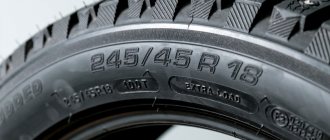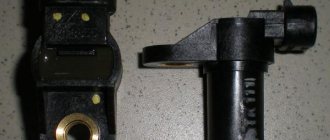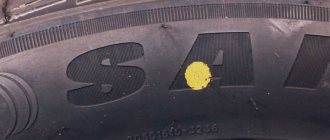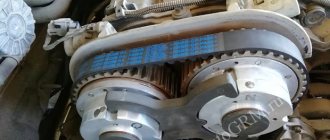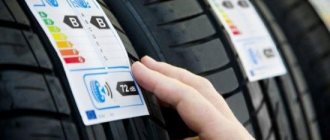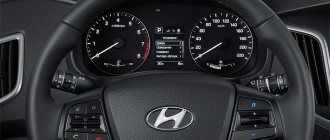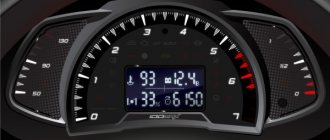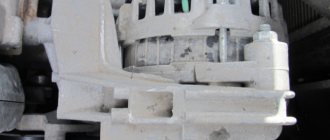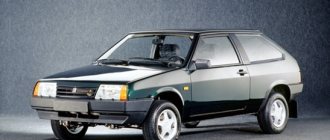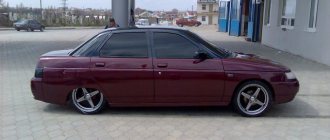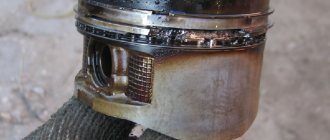Nokian summer tires
Nokian summer tires are distinguished by many positive qualities that are inherent in modern tires.
High-quality grip on the road surface and environmental composition ensure that rubber can be used in any climate conditions and at any latitude. Based on customer reviews, summer tires perform well on hot road surfaces, even if the air temperature reaches 40 degrees Celsius. Nokian car tires
Note!
These tires are not afraid of slight ice and wet roads, so they can be used even in the autumn season.
The grooves between the blocks of the shoulder area of Nokian summer tires have a special arrangement. Thanks to the unique shape of the rubber, drainage water is easily carried out, and in places where the grooves narrow, throttling occurs. As a result of this phenomenon, water does not stagnate, but is effectively removed from the top of the wheel, which allows maximum hydroplaning to be achieved even at speeds of 100 km/h. The main advantages of Nokian summer tires include the following:
- excellent grip on wet road surfaces;
- noiselessness.
As for the disadvantages, they are represented by a short service life, not exceeding 5 seasons, and a soft sidewall that can be easily punctured. That is why experienced motorists strongly discourage driving over curbs.
P 185/65 R14 86 N
P 185/65 R14 86 H
- P – designation of the type of vehicle for which these tires are intended. “P or Passanger” - passenger car, “LT or Light Truck” - light truck, etc.
P 185/65 R14 86 N
- 185 – value of the tire profile width, mm.
P 185/ 65 R14 86 N
- 65 – the value of the tire profile height, measured as a percentage of the width. If a standard size without height is specified, for example 175 R13, the height is assumed to be 80-82% (full-profile tires).
P 185/65 R14 86 N
- R – tire design, divided into radial (R) and diagonal (D). The radial design is characterized by a parallel arrangement of rubberized cord threads, the diagonal design is characterized by an overlapping arrangement of threads.
P 185/65 R 14 86 N
- 14 – distance between the inner edges of the tire i.e. its internal diameter is calculated in inches.
P 185/65 R14 86 N
- 86 – coefficient or load index. Indicates the permissible load per tire in kg.
| Load Index | 60 | 61 | 62 | 63 | 64 | 65 | 66 | 67 | 68 | 69 |
| Max. Load (in kg.) | 250 | 257 | 265 | 272 | 280 | 290 | 300 | 307 | 315 | 325 |
| Load Index | 70 | 71 | 72 | 73 | 74 | 75 | 76 | 77 | 78 | 79 |
| Max. Load (in kg.) | 335 | 345 | 355 | 365 | 375 | 387 | 400 | 412 | 426 | 437 |
| Load Index | 80 | 81 | 82 | 83 | 84 | 85 | 86 | 87 | 88 | 89 |
| Max. Load (in kg.) | 450 | 462 | 475 | 487 | 500 | 515 | 530 | 545 | 560 | 580 |
| Load Index | 90 | 91 | 92 | 93 | 94 | 95 | 96 | 97 | 98 | 99 |
| Max. Load (in kg.) | 600 | 615 | 630 | 650 | 670 | 690 | 710 | 730 | 750 | 775 |
| Load Index | 100 | 101 | 102 | 103 | 104 | 105 | 106 | 107 | 108 | 109 |
| Max. Load (in kg.) | 800 | 825 | 850 | 875 | 900 | 925 | 950 | 975 | 1000 | 1030 |
| Load Index | 110 | 111 | 112 | 113 | 114 | 115 | 116 | 117 | 118 | 119 |
| Max. Load (in kg.) | 1060 | 1090 | 1120 | 1150 | 1180 | 1215 | 1250 | 1285 | 1320 | 1360 |
| Load Index | 120 | 121 | 122 | 123 | 124 | 125 | 126 | 127 | 128 | 129 |
| Max. Load (in kg.) | 1400 | 1450 | 1500 | 1550 | 1600 | 1650 | 1700 | 1750 | 1800 | 1850 |
P 185/65 R14 86 N
- H – speed coefficient or index. Indicates the value of the maximum permissible speed at which safe movement is possible.
| Speed index | J | K | L | M | N | P | Q | R | S | T | U | H | V | VR | W | Y | ZR |
| Max. Speed (km/h) | 100 | 110 | 120 | 130 | 140 | 150 | 160 | 170 | 180 | 190 | 200 | 210 | 240 | >210 | 270 | 300 | >240 |
By appearance
This method is the easiest, but it will not provide one hundred percent results. Its essence is a visual inspection of tires. There are a number of factors that unmistakably indicate that they can no longer be used:
- If the rubber shows cuts, cracks and other defects.
- The tread shows uneven wear, when one area is in normal condition, and the other is completely worn down to the cord layer.
- Worn inner part of tires - sometimes it can touch some element of the car and wear off.
- The presence of lumps also indicates that the degree of wear is higher than acceptable.
Workers at service stations and tire shops, and even some motorists, are able to detect the level of tread wear by eye, determining its approximate height.
What is a tire wear indicator and why is it needed?
Each manufacturer strives to make their products as safe as possible. To simplify monitoring of the current condition, each unit has a tire wear indicator. It allows you to determine how much the tread is worn.
There are several types of indicators; each manufacturer solves this problem independently. What all tires have in common is the ability to quickly determine the degree of wear.
You should not rely only on the indicator. When assessing, always take into account the general condition of the tire.
Technologies in Nokian tires
Nokian is known as a major innovator in the tire industry. To introduce new technologies, the Finnish brand uses its own laboratories and engineering resources. Nokian rubber is the product of careful research, detailed development and multi-level testing. On the manufacturer's official website you can find detailed information about the tests carried out on Nokian tires and the stage-by-stage work of engineers.
The Nokian tire model range includes a number of tires with the well-known puncture-free Run Flat technology. To ensure safety, the manufacturer has proposed a new DSI wear indicator. In addition, Nokia tires from the winter line are equipped with a patented anchor stud in the form of a hexagon. The official website of Nokia tires describes in detail the technology of placing a stud in a hole with the same geometry, which guarantees its stability.
The innovative technologies in Nokian tires can be described for hours. The aquaplaning indicator located on the sidewall of all new tire models deserves special mention. Air shock absorbers in Nokian tires contribute to comfortable driving. The rubber mixture uses natural oils from Scandinavian coniferous trees, which increases the environmental friendliness of the tires.
According to the manufacturer's official website, Nokia tires are created with improved environmental friendliness, fuel efficiency, safety and comfort. The Finnish concern also strives to create original technologies that its competitors are unable to replicate.
Quantity, shape
Typically there are six wear indicators on one tire. They are located at the same distance from each other, evenly around the entire circumference of the wheel. The location of the indicator can be indicated by special markings. It is applied opposite the mark in the shoulder area of the tire. Also note that the shape of the indicators can be different:
This number of indicators is made for the convenience of determining tire wear. You can find out how much the tire has gone bald in any position of the wheel.
Let's shake the air - “general” phrases.
Also see on our new website Part 2. (winter season 2012 – 2013)
The production of rubber products in the Finnish city of Nokia began in 1904, the production of tires began in 1925 (bicycle) and 1932 (car). In 1936, the first tire of the Hakkapeliitta series was born - the first winter tire in the world.
As a separate company, Nokian Renkaat was formed in 1988 by spinning off from the Nokia conglomerate (since 1967, Nokian was its “rubber” division). Now Nokia (which has become a major mobile phone manufacturer) has nothing to do with Nokian.
In 2003, the Japanese company Bridgestone, which owns more than 60% of the shares, became Nokian's largest shareholder.
In 2004, the project began to build a plant in Russia, in Vsevolozhsk, near St. Petersburg. The project was given a quick start and construction work began immediately. The first Nokian Hakkapeliitta tires were released in June 2005.
This is the official version. To put it simply, everything happened like this: Nokian (since 1932) made good tires, especially winter and studded ones. The tires were intended for the Scandinavian market; a certain number of tires were also sold in continental Europe. But!
- None of the world tire brands considered Nokian as a serious competitor;
- Nokian has never been a leader in the production of summer tires.
Nokian was lucky (as we know, those who help themselves are lucky) - after the collapse of the USSR, “new Russians” (primarily from St. Petersburg and Moscow) got the opportunity to join the “delights of Western civilization” and the flow of Russian tourists in the early 90s was an avalanche walked across Europe, sweeping off the shelves everything that was not available to them before. Finland also suffered, especially since St. Petersburg and Helsinki are only 380 km away. This is how Finnish tires, among other goods, came to Russia.
Good winter tires, inexpensive winter tires, high-quality winter tires... Nokian tires were inexpensive (relatively inexpensive), their quality was very high and there was no question of any summer tires! Inexpensive, high-quality goods made in Finland - what else do people need for absolute happiness? Nokian winter tires quickly gained popularity in both capitals, and from there the fashion for them spread to the provinces (including Ukraine).
After the collapse of the USSR, 250 million people got the opportunity to buy imported goods, respectively, foreign manufacturers received 250 million not very sophisticated and not very demanding consumers. Other goods included tires. For various reasons (successful geographical location, low price with high quality, specialization in “Scandinavian” type winter tires, etc.), it was Nokian products that our compatriots began to associate with the standard of winter tires.
The money earned by the company was profitably invested - the plant in Russia today is the largest production site for Nokian, which is not surprising - today the main sales market for them is Russia and Ukraine (this is according to official data, and if you take into account the huge scale Nokian smuggling from Europe, the CIS becomes almost the only market for their products, besides Scandinavia). Russia has significantly lower labor costs than Finland, more tolerant environmental legislation, etc.
And then Nokian suffered - the highest prices on the market and not only for winter tires, but also for summer ones, the chain of retail stores "VIANOR", huge quantities of tires in which these stores were choking, a sea of aggressive advertising (including through test results in Russian automobile publications that raise doubts about their objectivity). Plans to build a plant in Ukraine and even in Kazakhstan (on the basis of the destroyed plant in Chimkent). With all this, we should not forget that an increasing number of “Finnish” tires had the inscription “Made in Russia” on the sidewall and an increasing number of customers paid attention to this.
As a result, fewer and fewer tires were sold and more and more were produced. I won’t talk about Russia (the situation there is unknown to me), but in Ukraine this year it is almost impossible to buy Nokian (especially in large sizes) produced in 2010. Even “VIANOR” (officially representing Nokian) mainly offer their customers 2008 tires (sometimes 2009) year of release. Many Ukrainian companies that collaborated with Nokian in 2007-2008, and later were not included in the VIANOR system, still continue to sell tires produced in those years. A huge number (thousands) of tires produced in 2006 - 2008. entered Ukraine from Poland. All this has been mixed up, as a result of which today different sellers can offer absolutely identical tires at a price that may differ, for example, by two times.
Nokian in Russia
In Russia, the Nokian company is located in Vsevolozhsk. This plant has been here for 13 years and is the largest among other tire manufacturers. The company's office is located in the same city. It resolves issues related to doing business not only in Russia, but also in Kazakhstan and Belarus.
On average, about 15 million tires are produced here per year. Only half of them remain in Russia, and the remaining half are exported. The company is one of the top manufacturers not only in Russia, but throughout the world.
Nokian's main plant is located in Finland. This is where the company's history began. Some models for Russia are produced in Finland.
Reviews
What are the reviews from real motorists? We will present two of them.
Leonid L. from Stavropol: “I drove Hakka Green for two seasons, without getting out from behind the wheel for days. There are no hernias or significant wear. On asphalt the tires are very quiet, only a slight buzz can be heard. If you don’t accelerate and drive adequately, these tires will last for several seasons.”
Alexandra N. from Moscow: “I installed Nokian Haka7 for the winter. The cost, in modern times, is more or less adequate, friends also responded well. What can I say, the tires did not disappoint. They hold the road confidently, there are no drifts. The only remark is that the sidewall is rather weak for our roads. However, where Nokian is produced, they probably don’t know about them.”
Maximum load and pressure
It is extremely important to adhere to the recommended load and tire pressure values. Therefore, each manufacturer indicates this data on the side of the tire.
Marking of maximum load and tire pressure
These data indicate the permissible load on 1 wheel (!) . This data is also indicated in the load index.
The following markings are also found:
- Reinforced - means reinforced tires, that is, the load index is increased.
- XL or Extra load - means an increased load index by 4 units.
Briefly about the main thing
First of all, in view of the above, a reasonable question arises: can rubber, the development of which was carried out more than ten years ago, really be called modern? As it turned out, quite, because many of the discoveries and conclusions made at that time are still used in the elite series from this manufacturer.
First of all, the Finns tried to adapt their tires as much as possible for the harsh winter conditions that are so familiar to a large number of car enthusiasts. Therefore, to the question: “Where is Nokian Nordman 5 produced?” you can confidently answer: “In Russia, closer to real operating conditions.” It is designed for confident passage on any type of winter road surface, be it icy asphalt or slushy snow on the ground. And its strength should be enough to cope with collisions with various obstacles that may be encountered on the roads. Is this really so, the reviews that we will turn to at the end of the article will tell you.
Colored tire markings
You may have noticed that some new tires have colored markings, 2 colored dots, red and yellow. This was done for better wheel balancing during tire fitting.
Colored tire markings
The yellow dot indicates the lightest spot on the tire. When mounting tires, this mark is aligned with the hole in the rim for the nipple.
The red dot is the hardest part. Or a part with greater heterogeneity of the material.
Colored stripes on the tire tread
Colored stripes on the tread are mainly used to facilitate sorting in warehouses and for logistics purposes. They do not carry any other information.
Nokian tire classification
The Finnish organization, as befits all worthy manufacturers, produces tires for all seasons. Each class of tires has individual characteristics and is manufactured using different technologies.
Features of winter tires
Winter tires for cars from Nokian are famous for their strictly positive reviews. It is worth noting that the process of making this type of tire is completely different from creating summer tires. The range of winter tires includes a huge selection of rubber, but not all of it is studded. But absolutely each of the tires has unique properties. In the rubber manufacturing process, lamella technology is used, thanks to which the car stops smoothly during braking, without changing its direction. It is because of this that skidding when braking is almost impossible.
It is even interesting that non-studded tires can boast of such good grip as many studded tires from other manufacturers. Winter tires from the Finnish company proudly take first place in the European market and never lose in quality to their analogues. Of course, winter tires from Nokian are quite expensive, but this price is justified by the quality. If the driver loves his car and respects maintaining a clean environment, then purchasing such tires will be the best decision.
Characteristics of summer tires
Absolutely every summer tire from the Nokian manufacturer has unique technical parameters that will ensure the best road travel with maximum comfort. Among the wide range of tires, the overwhelming majority of summer tires have excellent durability, wear resistance and strength. These tires are not afraid of mechanical deformations.
Such durability and strength of rubber is achieved thanks to a special composition that is used during the manufacture of the product. The composition includes absorbent gel, rubber and silica. This is only a small part of the known ingredients, since the rest is strictly classified. Still, the average driver should not bother with the detailed manufacturing process. The most important thing is the best performance of the tires, even during constant use on the road. The tires grip the road perfectly in all weather conditions. This is facilitated by the excellent tread profile, coupled with excellent quality materials. Each model of summer tires at the beginning of the manufacturing process can be designed and formed with an individual pattern. Next, with the help of computer programs, the tire is optimized for the conditions of use.
In some countries, motorists use this tire even in the winter season, provided that there are no snowdrifts or ice on the roads. Of course, in our country it’s better not to take such risks, because Russian winters are much harsher than in other countries, and the quality of roads leaves much to be desired. The main advantage of summer tires from the Finnish manufacturer is durability. These tires can be used for at least five years.
Main types of indicators
The simplest is a volumetric type determinant, which functions simply and clearly. As the tread wears off, it begins to compare with the height at which the beacon is located. This means that the tire must be replaced. Today, manufacturers equip tires with not only the main indicators, but also intermediate ones, so that the driver can monitor the wear of the pattern in advance and prepare for replacement.
We recommend: Repair of mono injection for Volkswagen Passat B3 with video and photo
The digital indicator on the tires looks somewhat different. Represents numbers extruded into the tire at a certain depth. The smallest number (usually 2) is at the greatest depth and vice versa. During operation, the tread will wear out, and the numbers themselves, accordingly, will disappear. As soon as the last one disappears, it means that the rubber has reached a critical level of wear. It is digital beacons that have become most widespread for the reason that they do not need to be deciphered, and even a child can understand their meaning.
Tread height
The best way to determine tire wear is to use a caliper. It will allow you to know exactly how high the tread is. A ruler with a depth gauge or other tool is also suitable for these purposes.
To accurately understand how many millimeters are left and determine tire tread wear, it is recommended to measure the thickness in different areas, since the percentage of wear may be uneven. If all measured values are greater than the minimum acceptable values, then the tires are still suitable for use.
If the value is less, then it is not recommended to continue operating the car with these tires, since they will not ensure safe driving, especially in emergency situations.
If you don’t have a caliper at hand, you can measure the tread height using a coin. It will allow you to understand how much height is left, but it does not guarantee the accuracy of measurements, but only allows you to roughly compare the indicators of uniformity/unevenness of rubber abrasion.
Why is this so important?
The main characteristics of any tire are determined by the shape and height of its tread. It is the latter that affects the traction of the wheels (and, accordingly, the entire car) with the road. Also, the tread height affects the quality of dirt and water removal. Thus, thanks to the pattern and its thickness, the best contact with the road surface is ensured.
But car tires are subject to constant wear and tear. After some time (this is a mileage of more than 80 thousand kilometers), the tread thickness decreases several times. Why is it so important to look at your tire tread wear indicator? If the height of the pattern decreases, this entails the effect of aquaplaning. When hitting a wet surface, the contact of the tires with the road is lost and the driver loses control. As for winter tires, the problem is different. It is difficult to drive out of a snow drift on bald tires. The braking distance also increases noticeably. This may cause an accident.
Types of tread wear indicators
Manufacturers solve the problem of label placement in different ways. First of all, they are located in different places.
- At the bottom of the grooves. This is the most common option.
- On tread blocks. Color identification is used here. It is not considered the most reliable method.
- On the sides. Primarily focused on the wear of shoulder blocks, it is often used on off-road tires.
Knowing where the indicator is located, it is much easier to find it.
In addition to location, there are different types of indicators. This must be taken into account so that you do not have to look for a non-existent mark.
- Tubercle. Usually located deep in the groove. Has the minimum height allowed for a specific type of tire. For summer tires the height will be 1.6 mm. The level of wear is easy to determine; if the groove is level with the tubercle, the tire should be replaced.
- Colored marks. The principle of operation is simple - to show that the tread block has worn down to a minimum value. Sometimes such indicators are erasable, in which case the mark is made to a certain depth. As soon as it disappears, it is worth changing the tires. Another option is a recessed mark; in this case, the colored mark appears only when the rubber before it is worn off, which indicates the tire has failed.
- Digital tags. They work similarly to color ones, but they use numerical values that tell you how much tread depth is left. Valued by drivers who often travel long distances. Also, such marks allow you to determine the time of changing tires between axles.
The location of the mark can be found by the triangle on the sidewall. It shows where the indicator is located on the tread.
Where is he located?
It is part of the tread and is located in the recess between the checkers. This applies to all tires, be it products or Bridgestone. The tire tread wear indicator may differ only in its shape. Some manufacturers provide a separate checker for it, which is divided into several parts. Each of them has a different thickness.
For example, the height of the tread wear indicator on L-5s winter tires can be eight, six and four millimeters. On summer ones, a convex stripe is often used as an indicator. Its thickness is usually about two millimeters.
At the moment, there are several types of tire tread wear indicators:
- Volumetric. They are a convex line that is located in the groove of the pattern.
- Digital. These are numbers pressed into the tread with different thicknesses. Often used on winter tire models.
- Strokes. They have different depths. The bars are also located in the tread grooves.
The simplest indicator of tire tread wear is volumetric. How does he work? As the tread wears, this indicator merges with the pattern. This indicates that the tire is critically worn. It needs to be replaced. On some models, in addition to the main ones, there are also intermediate indicators. They warn the driver that the tread height has decreased and the tire will soon require replacement. But usually such a tire can be used for another 20-25 thousand kilometers.
As for digital ones, they have two degrees of depth. The largest number used here is 8. It informs the driver that the tread remaining is at least eight millimeters. This designation can be on both winter and summer tires. But the indicator of critical wear has different values depending on the season. So, the smallest number on summer tires is two millimeters. And in winter - four. But experts say that a winter tire should be changed already with a tread thickness of 5-6 millimeters. Yes, no one will prohibit you from driving on such tires. But the quality of contact with the road (especially if it is loose snow) will be questionable.
Helpful advice: if the wear of winter tires is approaching critical, it is worth taking snow chains with you. This way you can get out of the snow captivity without any problems.
Types of tire wear
Numerous reasons that cause tire wear lead to a variety of its manifestations. As a rule, the following types are distinguished:
Normal Wear
It depends on the location of the wheel and manifests itself differently for each of them (front and rear). The tread changes that occur are shown in the figure below.
To correctly determine the condition of the tires, it is necessary to inspect all the wheels of the car. The reasons for such uneven wear will be clear from the figure.
The steered wheels experience significant lateral loads when cornering, causing wear on the sides to be higher. On the drive axle, rubber wear is higher in the middle, since this is where the interaction between the wheel and the road occurs to a greater extent. The picture below, which describes tire tread wear, is typical for a car with a classic drive. In a car with front-wheel drive, wear on the rear and front wheels occurs more evenly.
To avoid uneven tire wear, manufacturers recommend periodically changing the wheels together according to a certain pattern, for example, as shown in the figure.
A detailed scheme for rearranging wheels (rear and front) for a specific car brand is given in its operating manual.
One-sided wear shown in photo
Such uneven tire wear can be due to several reasons, but is usually associated with a violation of the suspension geometry. To accurately determine the causes of such uneven tread wear, it is necessary to check the alignment/camber. Tire wear on the outside is usually caused by excessive camber/toe, and on the inside - by negative camber/toe.
However, the possible reasons for this behavior of rubber are not limited to this. They can be caused by a lack of alignment or a defect in the axle shafts. In addition, cornering at higher speeds causes additional wear on the tires.
Bilateral and central wear
This is most often caused by incorrect tire pressure. If it is low (or the car is overloaded), then the contact area of the wheel with the road increases and wear occurs along the edges. If, on the contrary, the pressure is increased, then the contact patch decreases and the rubber wears out mainly in the middle. So, if you check the tire pressure in a timely manner before your trip and do not overload the car, many problems can be avoided.
Wear around the circumference in several places or in patches
The source of numerous spots on the wheel will be its imbalance. First of all, this is typical for those of them that are located on the steering axis. Such a defect can be partially eliminated by balancing, but if the wheel has lost its shape, then even this will not help. If damage appears in the same places even after replacing it, then the reason is a faulty suspension (springs, levers, shock absorbers). So before installing any wheel, it is a good idea to check that it is properly balanced.
Damaged tires should not be used; this will affect traffic safety and the general technical condition of the vehicle. A single spot on the tread can be caused by emergency braking with locked wheels.
Sawtooth (comb) wear
What it looks like is shown in the figure
It appears most often on tires with block tread located on the drive axle. The reason for this is the deformation of the wheel surface upon contact with the road (the blocks are crushed and when the car moves, they are dragged along the surface, as a result of which some of them are simply pressed together). It is impossible to avoid such wear, but you can reduce the degree of its impact on the tires by swapping wheels.
Types of wear
When a car moves, a whole complex of multidirectional forces acts on its wheels, and they differ depending on which wheels they are - steered or driven. In the first case, the edges of the tire wear out, in the second - in the middle of the tread. That is why, in order to wear tires more evenly, it is recommended to change them at least once a season.
Uneven one-sided wear is most often due to incorrect wheel alignment angles or defects in the steering, due to which the contact patch is shifted to the side.
Bilateral and central abrasion occurs from incorrect pressure - in the first case it is low (the tire is flattened), in the second it is high (the tire is overinflated).
Local defects and spots on the tires can be caused by improper wheel balancing, as well as from harsh driving with frequent acceleration with slipping and braking with wheel locking.
The lineup
For passenger cars
| Summer | Winter | All-season | Sports summer |
|
|
|
|
For SUVs
| Summer | Winter | All-season | Sports summer |
|
|
|
|
For light trucks and minibuses
| Summer | Winter | All-season |
|
|
|
How to determine the wear level of tires using an indicator?
Hello everyone, dear motorists! Any normal driver strives to drive a car not only with the maximum level of comfort, but also safety. This criterion is directly influenced by the steering and braking system, as well as the quality of car tires. And we have already discussed which tires are better to buy, friction or studded, for the winter, and we talked about the advisability of buying all-season tires. The degree of wear plays an important role; in determining it, a tire wear indicator can be a good assistant - what it is and where it can be found, we’ll talk in today’s publication.
What is a tire index
The tire index is a variable value characterized by various properties of rubber and provides information to the driver about the possibility of its use for a specific brand of vehicle. In total, on each branded tire you can see 5 main indices in the marking line, in particular:
Full tire markings
You may be interested in Which tires are best for Renault Logan
Tire speed and load indices
For ordinary tires, widely sold among citizens, this tire wear resistance index is 200...400, but sometimes the figure can reach 500, which is suitable for confident driving on city streets and country roads for 2...3 years during normal use.
Special shape of the spike
We have already dealt with the base of the tenon, which is a square plate. And with such a structure, one could well expect the same shape for the spike itself. Moreover, the originals from ten years ago had a tetrahedral one. Why was the decision now made to abandon such a concept?
The answer turned out to be much simpler than one might expect. One could debate for a long time which shape would be better suited for confident traction with the road and better bite into the ice, if not for one “but”. Whatever the material from which each stud is made, after rolling, regardless of the original shape, these elements still become round. This means that this can reduce the cost of production without bothering with giving certain shapes to the spikes from the factory.
In addition, elements with a four- or hexagonal shape, as tests have shown, wear out faster than round ones, since they resist more when driving on clean asphalt. So this concept in the Nokian Nordman 5 SUV also made it possible to extend the service life of the studs, which allows you to avoid spending extra money on re-studding.
Tire mileage before wear
Each manufacturer declares different values for its products; imported tires have a traditionally longer maximum mileage before wear than domestic tires. A table of average mileage values for various tires (excel format) can be downloaded from the link.
Tires have a significant impact on the vehicle's driving safety. And the higher the percentage of their wear, the more unpredictable the car’s behavior can be, especially on slippery or snowy roads. Compliance with the rules of vehicle operation, timely and proper care of the wheels will allow you to extend the service life of the tires without additional costs and ensure its reliable grip on the road. » alt=»»>
Decoding the marking of Nokian car tires, how to find out the year of manufacture
Each car tire has designations and signs.
Many believe that this indicates the standard size of the rubber, as well as their design and load parameters. In fact, even the most inexperienced driver can decipher the markings of a car tire, since all designations are represented by the following characteristics:
- tire type and weight, which helps determine tubeless and tube tires;
- load index and tire size;
- speed index and warranty for Nokian tires;
- date of manufacture, indicated by a four-digit code, and seasonality;
- weather conditions (for example, if there is an umbrella symbol on the tires, then the wheels are designed for driving on wet road surfaces in rainy weather).
Car tire markings
The corresponding marking will help you find out the year of manufacture of a particular tire, but many inexperienced car enthusiasts wonder where it is located. Vehicle components are produced in batches, and each of them is marked with a four-digit code, which indicates in which year the wheels were produced.
Note!
In most cases, this four-digit code is located on the rim of the tire. To make it convenient to detect such a mark, place it in an oval stamp.
The production date includes no more than 3-4 digits, which indicate not only the year, but also the month of production of the components. For example, the code “0914” can be deciphered as follows:
- 09 - the ninth month of the year, that is, September;
- 14 is the year of production.
The corresponding designation indicates that the tires for the car were produced in September 2014. The mandatory introduction of a four-digit designation was adopted in 2000. In this regard, when you see 3 numbers instead of 4 on the wheels, you can understand that the components were produced back in the last century.
Causes of car tire wear
This question is quite ambiguous. On the one hand, in practice, the causes of tire wear, including increased wear, have been identified and understood, as well as the measures that need to be taken to eliminate them. We can say that the general picture of the phenomena occurring during operation is clear. On the other hand, tire tread wear depends on subjective factors, such as driving style and road conditions.
However, experts have identified and established the main reasons that cause car tires to wear beyond normal limits:
- non-compliance with air pressure in tires;
- excess vehicle load (tire load index and standards established for the machine in the manual);
- driving in violation of vehicle operation rules;
- performing maintenance in violation of deadlines and regulations;
- wheel imbalance;
- violation of installation rules;
- Chassis and steering malfunctions.
As can be seen from the information provided, tire wear that exceeds the norm is caused either by the technical condition of the car, or by its improper operation or driver negligence. In fact, the car itself signals its malfunctions, for which you just need to look at its wheels.
Its rupture can lead to a tire rupture and unpredictable consequences, especially if it happens while driving. So, in order to ensure safety, it is necessary to change the tires to new ones after ten years. According to available data, over three years of operation, rubber loses ten percent of its service life.
Tire rotation direction. Asymmetrical tires
Not all tires are the same. There are tires for which the direction of rotation of the wheel matters, and which side of the wheel faces outward and which side faces inward. Such tires are called directional , or with an asymmetric tread pattern .
The correct direction of wheel rotation is indicated by an arrow and the word Rotation.
There are also inscriptions like outside . Which means you need to install the tire with this side facing out.
How to determine the side of a tire
Such measures are due to the asymmetrical or directional tread pattern, which is designed for effective adhesion to the surface. If the pattern is directional, it means that it only provides the desired tire performance when rotated in the desired direction.
Symmetrical and asymmetrical tread types
Labels depending on the tire manufacturer
Many manufacturers use original indicators that are specific only to their products. As a rule, each brand uses one mark, and the next time you buy the same tires, but of a different model, you will already understand how to check the tread for wear. This is done so that the consumer gets used to one brand.
Nokian has numbers on the tread. They are made to different depths. As soon as the last one disappears, it is necessary to urgently change the tire. Winter tires of this brand additionally use tubercles in the grooves, they are made in the form of snowflakes.
Michelin does not focus on one type of indicator. Depending on the model, the tire may be marked differently. Here we can only mention that the location of the tag is indicated by TWI or the manufacturer’s corporate logo.
Bridgestone makes several indicators. This allows you to more comfortably assess the condition of the tire. Colored marks are placed on the rim; as soon as they are erased, the tire should be changed. Winter tires additionally have an indicator in the form of a protrusion in the groove. A total of 4 marks are placed around the entire perimeter of the tire.
Tire wear indicator
This method helps the driver to easily determine whether the tires need to be replaced at the moment. For example, well-known companies Nokian and Bridgestone put such indicators on their products.
Bridgestone
This company is widely known in the domestic market. Its products have found great popularity among car owners due to the increased durability and reliability of tires, as well as ease of use. The rubber of this company contains a wear indicator, or even several.
Usually there are two such indicators on a tire. The first of them indicates the urgency of replacement and shows the critical height. The scales are located in six places on the tire. To quickly find them, there are white marks located on the outside of the rubber.
Another wear indicator shows when the tread is half worn. Only winter tires are equipped with such scales. This is an ordinary protrusion with stiffening ribs. There are 4 of them in the entire structure. If at least one indicator is worn out, then the tires should be replaced with new ones.
Tire wear indicators are convenient because there is no need to perform calculations. You need to look at the locations of the indicators and the need to replace the tires immediately becomes clear.
Nokian
This company equips tires with wear indicators, which are made in the form of numbers indicating the tread height. There is a snowflake in the marks. When it disappears in operation, the tires can no longer be used in winter. The normalized height for rubber of this brand is 5 mm. Only with this value can tires be used in winter.
Classification
The standards provided by manufacturers are listed in the regulations (motorcycle - 0.8 m, trucks - 1 m, passenger vehicles - at least 1.6 mm). The values of this indicator are mandatory in Russia and the CIS countries.
The simplest indicator of tire tread wear is volumetric. The strokes are located around the entire circumference of the wheel. The shape may also vary. The type of product is determined by the wear indicator of winter tires from Nokian. The snowflake symbol can be seen on winter tires (example in the photo). There is no summer one.
The triangle (sometimes accompanied by the inscription TWI) is placed on summer tires made by different manufacturers. One of its peaks is pointed towards the tread pattern. The thickness of the indicator depends on the model and brand of the tire.
The Michelin tire tread wear indicator is proprietary. The degree of wear of a rubber product can be determined regardless of the position of the car. Many people prefer European standards. A tire wear indicator of 6 mm is set for winter tires. The minimum acceptable parameter is 4 mm. For summer values, the figure is reduced to 1.7 mm. Current wear is calculated using a simple formula: the difference between the initial and current tread height is multiplied by 100 percent. There are several tire indicators from Bridgestone.
Tire wear is an event that cannot be avoided. This does not mean that the recommendations are useless. Maintenance and careful driving ensure a significant increase in service life. Following simple rules allows you to forget about problems with the serviceability of the chassis and steering mechanism.
Stickers on new tires
You've probably all noticed the colored stickers on new tires, but not all of you know what they mean. let's take a closer look.
Stickers on new tires
RRC (Rolling Resistance Coeficient) - Rolling resistance coefficient.
RRC - Rolling Resistance Coefficient
Indicated by a letter index from A to G. The best indicator is considered to be index A. The rest increase fuel consumption on the reference car in accordance with the table. a passenger car that consumes 6.6 liters. gasoline per 100 km.
Noise level outside the car
Noise level outside the car
It is measured in decibels (dB) and is indicated by a picture of a speaker and a wheel. Completely black waves mean a noise level of 75 dB or higher, which will be prohibited in EU countries from 2021. The remaining data is shown in the figure.
Grip on wet asphalt
Indicated by letters from A to G. A - the best performance, that is, the shortest braking distance on wet asphalt.
Grip on wet asphalt
WGI - wet grip index , measured in % relative to the reference width.
The table shows the differences in braking efficiency for different grip classes on wet asphalt.
Types of tires
According to the classification of summer tires, Bridgestone is divided into four classes
"Potenza"
This class refers to sports tires that are created using unique technology. Run flat technology makes it possible to drive for a long time with a flat tire, which other manufacturers cannot boast of. When creating products, the engineers of the Japanese company focused on effective braking, as well as controllability in conditions of high humidity and on dry hard surfaces, which is a distinctive feature of sports tires.
Equally important attention was also paid to the material from which the tire is made. The product was created on the basis of silica and bitumen rubber, which ultimately provided increased wear resistance. The product performs well on dry and wet surfaces
The shape of the treads has slightly rounded edges, allowing the pressure to be evenly distributed over the wheel area, and due to the balanced structure of the product, it was possible to reduce its weight
The product performs well on dry and wet surfaces. The shape of the treads has slightly rounded edges, allowing the pressure to be evenly distributed over the wheel area, and due to the balanced structure of the product, it was possible to reduce its weight.
Ecopia
In the manufacture of tires of this class, only the most advanced technologies are used, which allow better adhesion to the road surface, which reduces fuel consumption and also achieves a high level of safety.
During the application of innovations, it was possible to ensure stability directly on the arc of rotation, as well as resistance to slipping, which allows you to confidently control the car. In addition to these indicators, it was possible to reduce the braking distance on wet roads.
"Dueler"
Products with special treads and optimal depth are designed for off-road driving. The special shape of the treads makes it possible to move on medium and soft soils.
In addition, thanks to the special tread pattern and materials used in manufacturing, it was possible to improve the grip and comfort of the car.
"Turanza"
The ideal Bridgestone premium summer tires. When creating this type of tire, the best innovations were introduced, with the help of which the ideal wheels were obtained, combining unique maneuverability on wet asphalt, as well as comfort and softness when driving. Products of this class meet the highest driving requirements both in city conditions and on rough terrain.
Unlike other manufacturers, Bridgestone tires are highly wear-resistant. Manufacturers achieved this result due to high-quality material and the addition of special substances. As for the depth of the treads, each type of product has its own height.
This is necessary to ensure that the vehicle’s grip on the road surface is as optimal as possible. Moreover, depending on the area, the climate may be different. This is why protectors with different types and depths are needed.
Nokian Hakka Blue 2
The Finnish manufacturer of summer tires of this brand positions them as a commercially successful product that combines a relatively low price with sufficient performance and demonstrates:
- optimal elasticity for a wide temperature range due to the new compound;
- reduced tread heating with reduced wear and rolling resistance due to the addition of pine oil to the composition;
- reduced specific pressure on the surface area, its uniform distribution, increased service life, improved handling and good grip due to increased belt stiffness and optimized tread profile.
Among the disadvantages of Hakka Blue 2 tires, car enthusiasts highlight increased wear.
How to use the wear indicator and when to replace a tire
Assessing tread wear using an indicator is quite simple and does not require any special skills. First of all, you need to find the position of the indicators using the icons on the side of the tire, and then use the indicator to assess the degree of tread wear.
In the case of a volumetric indicator, it is necessary to focus on the difference in the height of the tread and the indicator, and if they are equal, the tire should be replaced. Aligning the tread height with the intermediate indicator is not a signal that the tire needs to be replaced, but it does let the driver know that they should be careful and prepare for a tire change soon.
In the case of a digital indicator, you need to focus on the largest number embossed in the tread. So, if all the numbers on summer tires have been erased, except for “4” and “2”, then the tire can still be used, but you should prepare to replace it soon. The need to install new tires is indicated by the disappearance of the number “2” on summer tires and the number “4” on winter tires.
You cannot delay changing tires when they are worn out, as this is dangerous and, moreover, illegal. Therefore, it is recommended to periodically inspect tire wear indicators and replace them when critical wear occurs. This is the only way to avoid many of the dangers posed by “bald” tires and sanctions from traffic police officers.
What can you say about rotation?
Every 50-70 thousand kilometers, it is recommended to move asymmetric tires from one axle to another. This is necessary in order to avoid as much uneven wear on the tread as possible. But you need to remember a few more rules.
- Bridgestone tires can be rotated crosswise if the direction of travel is not specified. For example, you can put a front right tire on the left rear. And the back right is the front left, and so on.
- If the direction of movement is specified, the tires are rearranged on the same side when the front axle is changed to the rear.
By indicator
Some tires have a wear indicator. If it is level with the tread, the tires are completely worn out. Typically the indicator consists of numbers. The wear of summer tires should not be more than 2-3 mm, and for winter tires - no more than 4-6 mm.
At the same time, winter tires must also have studs; if they are less than 40%, then the tires are not suitable for further use, since they will not provide safe driving in winter.
In urban conditions, you can still drive without spikes in emergency situations, but be extremely careful, but on the highway you definitely can’t do this under any circumstances.
The tire wear indicator is located on the tread itself, but it is not so easy to find. To do this, on the side you should find a mark in the form of a brand logo, a triangle, or a special TWI sign.
On Michelin tires, the indicator is located in the central groove and is indicated by a special symbol.
The Continental company uses an intermediate indicator on its models, the erasure of which signals a loss of resistance to the effect of aquaplaning.
Nokian and Matador tires usually use a digital indicator. It is the most convenient of all, since the numbers on it correspond to the tread height in millimeters.
Source
